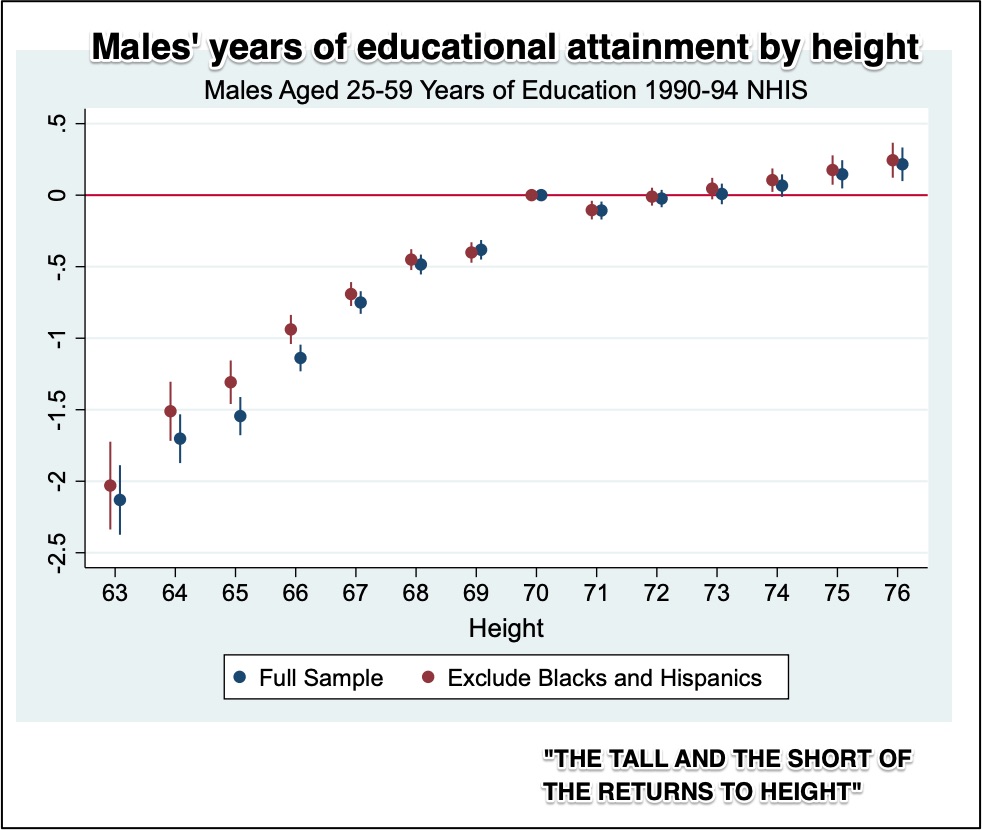On dating apps, as one pundit reports, the top 80% of all women try to pair with the top 20 percent of all men.
It all relates to height.
Height Bias
Dating Apps
While the average height of a U.S. man is 5 feet 9 inches, the majority of women list six feet as their preference. More precisely, women want a mate that is approximately eight inches taller than they are. Correspondingly, the dating app MillionaireMatch said male six footers had the highest success match rate.
By contrast, as one self-proclaimed short gentleman explained, women would benefit from a match with someone who was less than six feet tall. Not only would she have less competition but also the match could be more committed to her. After all, with fewer women seeking short people’s attention, they have fewer options outside the relationship.
In the following video from decades ago but perhaps timeless, you will see that women want to date the tall men. Increasingly attractive, the short men got (fictitious) career attributes, talents, and wealth added to their vitae until the women began to choose them over the tall guys. Still, as they jokingly pointed out, the tall guys had to become murderers for the women instead to select a shorter gentleman:
Not wanting to hurt any short men, I wanted to emphasize what former Labor Secretary Robert Reich says at the end of this video. At 4′ 9″ he is a short person’s role model:
Research
All of this takes me to a more rigorous academic world. We can ask what researchers have concluded about the benefits of height. In a recent study, economists from the Universities of Notre Dame and Toronto correlated height with attributes that included education and income. With samples focusing on adults 25-59, they used NHIS surveys that asked for self-reported height and UK data from a National Child Development Study.
Their main conclusion was the significance of the mean height. At 70 inches, the mean is a dividing line. Above, we have a pretty horizontal curve that illustrated added inches make no difference. Below though, where inches count, it slopes upward.
Education:
Height has also correlated to more years of schooling. Completed education has no significant economic benefit above the mean. Just one inch below the mean though, we already see one half year less of education. Moving down further, it ascends to a year and the “no high school diploma rate” also accelerates below the mean.

Wages:
Similar to education, the wage data plateaus. However, studies report somewhere between a 2.5 percent and 1.8 percent return per inch for white males:

Our Bottom Line: Human Capital
Just like a factory owner increases physical capital with more equipment, we build our human capital by accumulating education, informal knowhow, and the psychological equipment that lets us optimize our potential. As a constraint or a springboard, height can affect our human capital.
But, it does depend on what we call tall. Based on military records, a typical male was 67 inches during the mid-1800s, close to 70 inches in 1955, and since then, stayed there. During 1939, an average forward on the University of Wisconsin’s basketball team was 6’1″. For 1999, he was 7 inches taller. And, in South Korea, with the mean at 67 inches, their graphs have a shorter dividing line for when height plateaus.
All of this returns us to women’s height bias. If you are below the mean, it does have some validity. Still though, whatever the cause, we know that being tall is just one more ingredient in a success formula.
My sources and more: Thanks to Marginal Revolution for alerting me to the dating apps’ height bias. From there, you can read more about the bias, here and for some really good informal analysis, here. Then, to judge if it makes sense, this paper was excellent. I also recommend returning to econlife posts on height, here and here.







It’s always important to watch for confounding factors. While genetic factors lead some people to potentially be taller or shorter than others, childhood disease and/or malnutrition cause both cognitive deficiency and lack of potential height. While some sociological studies have demonstrated pervasive discrimination on the basis of height (and other forms of attractiveness), teasing out that influence from cognitive correlation is very difficult.
Rick, the NBER paper on which I based many of my facts deals with your concern. Do take a look.